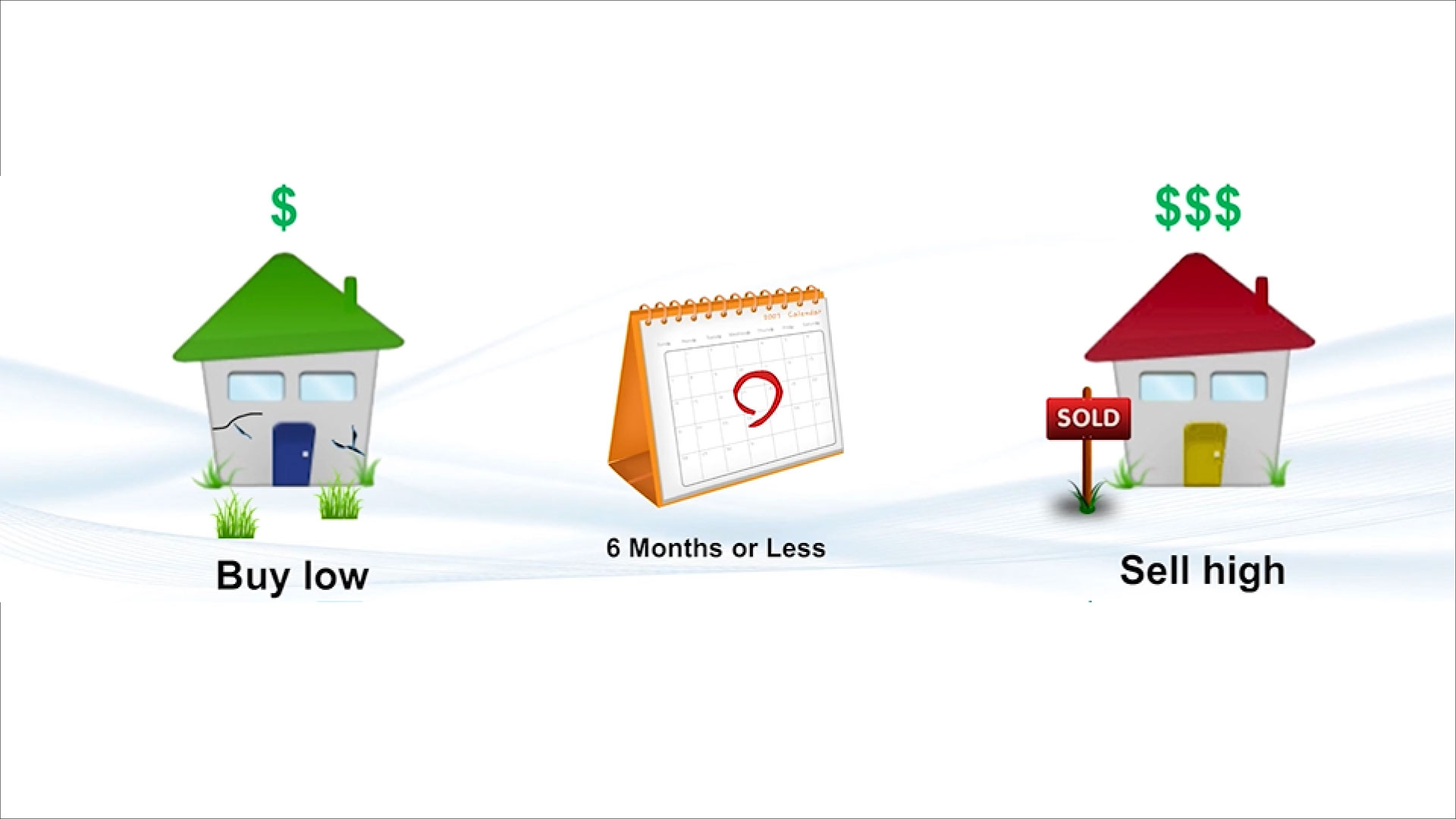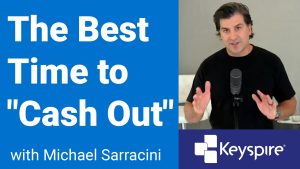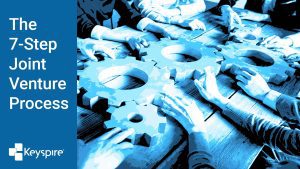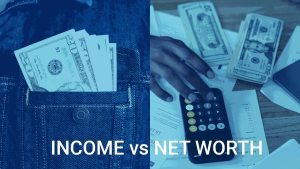Flipping 101 – The Basics

What is the purpose of flipping properties? Ultimately, it’s to make money.
Here are three ways you can make money with flipping:
- Flip to an Investor (wholesale level)
- Flip to a Homebuyer (retail level)
- Flip to Yourself (rent out the property as a Buy and Hold)
With any of these options, you as the flipper are making the profit.
Gaining an understanding of flipping basics is important as a real estate investor.
Knowing the purpose of flipping, how to make a profit, the key players involved, and what you should look for in your chosen market all play a key role when determining if flipping is the strategy for you.
Watch the video below where I explain this strategy and walk through WHY you might want to start flipping houses, HOW you can make money doing so, WHO the key players are, and more!
Check out the transcription of this video below!
Let’s talk about the flipping concept. To begin with, let me define the concept of flipping houses. Flipping houses refers to buying a house and then selling it to another investor or another owner in a relatively short period of time. Generally less than six months. It’s different from buying a house and living in it or buying it and renting it out to somebody for a longer period of time while you’re getting cashflow along the way.
With flipping, you’re actually making a profit on the house on the transaction itself. You’re basically buying the house low, meaning for a low price, and then you’re adding value to it, by often doing a renovation, fixing it up. And finally you’re selling it at a higher price and you paid for, and this is where you make your profit. Flipping can also entail a nuance called wholesaling, which we’ll go over in the future.
Now what’s the purpose of flipping? Ultimately, of course, it’s to make money and there’s three ways that you can make money flipping houses. Again, the general idea is that you’re buying a house at a low price and then selling it at a higher price. You’re earning the difference or making a profit in a relatively short period of time. Generally six months or less.
There are a few levels of flipping and each level allows you to make money in a different way. First, you can flip to another investor on a wholesale level. You can also flip to a home buyer at a retail level. And finally you can Flip to Yourself, so that you own the property and rent it out long-term.
With any of these three options, you as the flipper are making that profit. You keep that price difference between what you pay for the house and what you sold it for, regardless of who you’re flipping to. That’s the basic idea of flipping and that’s how your money is made.
So our flipping strategy:
You’re an investor. You want to know how to make the most money with flipping houses. Now the strategy is simple. The lower you can buy for, and the higher you can sell for, especially if you have very little work to do on the house in between those two steps, the more money you’re going to make. The advantages of a flipping investment or flipping strategy, as opposed to some of the other strategies is that you’re building up capital in a short period of time.
However, you do have to continue to flip and flip and flip in order to keep building up cashflow or to earn that paycheck, whereas in buy and hold or a cashflow property situation, you’re putting up money upfront, your returns are generally going to be a little bit smaller and maybe a few hundred bucks a month in cashflow, but you’re going to get your cashflow repeatedly over time.
You might be looking at a year, two years, five years, 10 years, or even more for that money to come in. It’s going to come in smaller amounts, but it’s going to provide an income stream to sustain you. So with flipping it’s the capital that you want to accumulate in a short period of time in order to buy other assets such as cash flowing properties later.
Often investors will have a formula. They’ll flip two or three properties to buy one buy and hold property. Flip two or three properties to buy one buy and hold property, so that after five or 10 years of business, they flipped a number of properties, but their retirement fund, their income really comes in their buy and hold property. So it’s great to think about how these two strategies are going to work together for you.
So let’s talk about who the key players are in the flipping strategy. Now that we’ve discussed why you might want to start flipping houses and how you can make money doing so, let me explain the basics in a flipping situation.
These people are, obviously you’ve got yourself, the seller of the home. You’ve got the buyer of the property, whether it’s an investor, a home buyer or yourself again, and you know why you want to get involved in a flipping transaction, but who are these other people and what do they get out of it? So let’s go through these other people to find out who they are and what they get out of this transaction.
So the seller. The seller is someone who wants to sell the property to you. To get a good price in the market, a discounted price in the market so that you can maximize that profit margin, you’re looking for what’s called a motivated seller. This means you want a seller who is in a hurry, who is anxious to sell, so they will do so quickly.
The reason for selling may be that they’re moving or a job transfer. Maybe they’re moving to another city and they need to sell it before they go, or possibly someone in the house has died. Maybe their mother or father or loved one, or they’re going through a divorce and a couple is now splitting up. So they don’t want to live together and they’re splitting up the assets for the sale of the house. Whatever the reason they’re more motivated to sell it as quickly as possible, even if it means at a discounted rate. Motivated sellers might also include people who have inherited a piece of property, but they live somewhere else.
Or they themselves were in an owner occupied house, but they live somewhere else now. They’re paying two mortgages. And they really need to get rid of that house. They really need to sell that house quickly. Other motivated sellers include people who are behind on their payments. Maybe they lost a job or the mortgage rate adjusted and now their monthly payments are more than they can afford. They stopped making payments in the home and the bank wants to foreclose on them. So they’re trying to sell the house as quickly as possible before they get foreclosed on and become an REO, so they can repay the bank whatever amount they owe, even if it’s at a discounted rate that the bank has to give.
That’s another motivated seller. Also the banks themselves might be motivated if they have a bunch of REO properties on their books, the real estate owned properties, or properties that have been foreclosed on. Meaning that it’s a house that the bank has already foreclosed upon. They don’t want to be holding that house. They want to sell it. In which case they’re a distressed owner or a motivated seller. You can tell there’s a number of reasons why the house you’re looking for is for sale. The house may be in good condition or the house may need repair. But it’s something that is not going to fix up, or they don’t have the money to fix up.
They just want to sell it and get rid of it as soon as possible. And that gives you more margin for profit when it does require repair and fixing. So that’s your first person, that’s the seller.
The next person is your buyer. This is the person you’re going to sell the house to. Remember that the buyer can be an investor, it can be a retail homeowner or it can be yourself. So let’s talk about the buyer investor.
The first type of buyer we’re going to discuss is this investor, and it’s also known as a wholesale buyer. This is what we call a wholesale flip. An investor is someone who is in the real estate profession, and they’re looking for houses to buy at a discount so they can fix them up and they can sell them at market value, making a profit on the difference.
To give you an idea, it could be that house and when it’s fixed up, it’s worth $400,000. But before that, it needs $30,000 in repair and you have about $40,000 in closing and carrying costs. And the seller recognizes that they’re going to have to offer the price that’s lower or less than market value to allow someone to be able to make that fix up.
They might be selling it at $290 or even $250 or even lower, depending on how badly the house needs repair and how motivated the seller is. So where do you come in? If you purchase the property at a good price, you can find an investor who’s willing to take on the contract for a consideration, also known as a finder’s fee, that is agreed upon between the two parties. The investor would then flip the house and sell it.
Now let’s say your real estate investor has an expected profit margin of %20. For that same $400,000 house, they would have a profit margin of $80,000. That’s 20% of $400,000. They might take on the contract from you for an agreed upon consideration and still have enough margin for the risk and the profit to do the deal.
The investor would then fix up the property and flip it. You are flipping it on a wholesale basis to an investor, and then they take it to the finish line and flip it to a retail homeowner. You may be asking, what is the advantage of selling to an investor rather than making the full amount? The advantage of doing it this way is that you can get a deal and a flip done in as little as two weeks, or you can do close in about 30 days at the most.
It’s a lot quicker of a closing and you get paid a lot sooner. Because most investors are able to close in seven to 21 days, you receive your consideration or your fee in under a month. You also do not have to invest money your capital into the repairs. You don’t have to buy paint. You don’t have to buy housing materials. You don’t have to deal with the construction company, get the house fixed and on the market, put on MLS, get your realtor or any of that stuff. You get in and out of the market very quickly. So those are the benefits to flipping investors. You make your profit without doing the hard work of fixing and selling.
There are two other types of buyers. Let’s see if either of these strategies make more sense for you.
The buyer, the retail homeowner. The second person you can flip to is a home buyer in a retail market. The retail home buyer is someone who generally wants a beautiful house that’s already fixed up. A turnkey property, meaning that it’s ready for immediate use and all the work has been done for them.
And they’re going to pay full retail price for it. In this case, you’re not flipping to another investor, you yourself are taking on the project. You’re doing the repairs and the construction work. This may take you anywhere from 30 to 90 days to finish the repairs and get it on the market for that retail homebuyer.
So again, let’s use our example of a $400,000 house. Let’s say the motivated seller sells it to you for $250,000. And again, it might take $30,000 to fix it and $40,000 for closing and holding costs. That means you have $320,000 invested in the project. If you sell a property for $400,000, you could have the opportunity to make a profit of around $80,000.
This would give you your return on investment of around 25% in just a few months. That’s $80,000 divided by to $320,000 invested into the property. Now, if you borrowed to purchase the property and you can leverage to purchase the property, you’re going to make $80,000 with less capital invested, so your return on investment will go through the roof.
That’s definitely more money, but when taking on the project yourself, you’re taking on more risk. You’re holding the property for a longer period of time. Let’s say you first buy the property in January, you begin repairs, and then you sell it in maybe March or April, that’s when you actually make the profit. You have to cashflow it the whole time and you have to invest capital in the whole time.
You also need to manage more people because you yourself are repairing it and managing the project. The benefit though, is that your profit and return on investment in the end is going to be much higher, because you’re taking on the full difference from the buying price to the selling price.
The beauty here is you have the decision-making power to do a wholesale flip or a retail flip, to sell to an investor or to a home buyer, or to do both depending on the risk, the reward and how much time you can put into it.
Let’s talk about the buyer, you as the buyer. The third person you could flip to is, of course, yourself. For example, if you buy the house for $250,000, you put in the repairs of $30,000 and you account for the closing and holding costs at $40,000. So far, you’ve invested $320,000 into this project. And then what happens is you sell it to yourself for, let’s say $380,000.
So you could either refinance it right into yourself, or you could sell it to another entity that you had. There’s still equity in the house. But you get paid off and your flipping company gets paid off. You get paid off the repair costs and you have a little bit of profit. And then the entity that you flip to owns a property and rents it out to the rental market. And that company makes the rental income.
Don’t have another entity? Then you could refinance the property with the bank at the higher value, the after repair value after the repairs, and you could keep it in the same entity, whether you want it personally or in a corporate structure, and you would get the check from the Flip to Yourself, plus you can keep the property for rental income.
You’ve just Flipped to Yourself, selling it to your own business or to yourself. This is a powerful strategy and is one employed by many Keyspire investors. Once you’ve flipped to yourself, you can now use the property as a rental and receive annual cashflow as a buy and hold.
Recent Blogs
The Best Time To “Cash Out” Is…
“When should I ‘cash out’ and sell my properties?” I hear this question a lot and it blows my…
Attract Higher Paying Tenants by Being Pet Friendly!
Optimizing an investment property is all about maximizing your income and minimizing your workload and expenses, such as tenant turnover.…
The 7-Step JV Process
“It’s better to own 10% of 100 properties than 100% of 1 property.” No matter how wealthy and successful…
Income Vs Net Worth
In today’s world, two of the most important financial metrics are income and net worth. Understanding the distinction between the…




